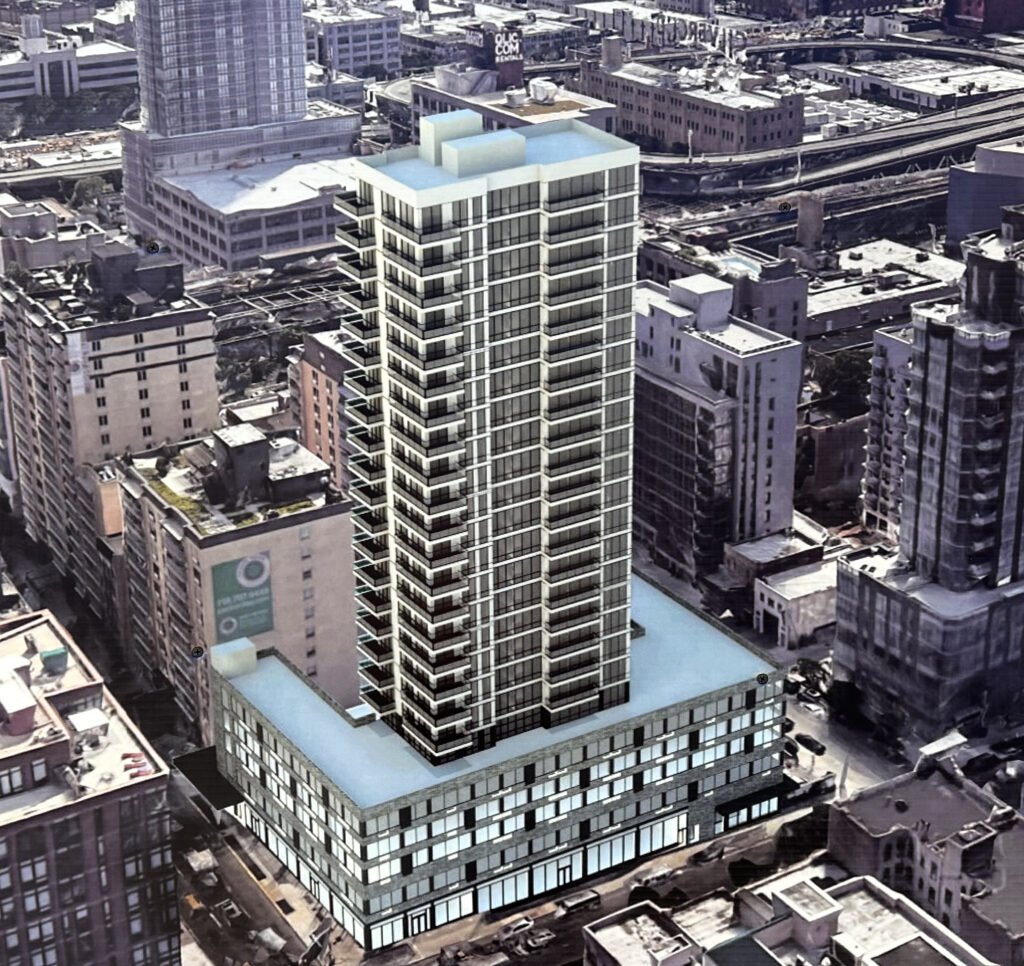
Many New Yorkers live among the dead — knowingly and unknowingly occupying apartments and houses where murders occurred.
Residents are typically not thrilled to discuss the fact they have bought or rented a place where one or more murders happened — and most real estate firms flee from being associated with what is known in the business as “a stigmatized property.”
“The company has respectfully declined to participate in this particular piece,” wrote a spokeswoman for Bellmarc realty in response to an inquiry from amNew York.
“We are going to pass on this story,” wrote a spokeswoman from Douglas Elliman Real Estate.
Kevin Brine, who has been identified in documents and reports as the buyer and occupant of a condo at 20 East 65th Street — the one-time residence of socialite Irene Silverman, who was murdered in her mansion in 1998 by mother-and-son grifters Sante and Kenneth Kimes — refused to comment when asked about the property via email and voicemail messages.
But some, stunned to find out their living space was once a bloody crime scene, freely share their shock. “Oh my God: I didn’t know somebody got killed here: I would have never moved in,” said Maria Ferreira, 55, who took an apartment in the Upper West Side’s Frederick Douglass Houses in 2008 – two years after the moldering bodies of Maria Rivera, 50, and her 9-year-old daughter Mariah Navarro were found, bludgeoned and wrapped in blankets, in the bedrooms.
No one has been arrested in their murders, according to the NYPD.
While Ferreira was told a previous tenant had “passed away,” she says was not informed that previous occupants had been murdered in the home. She would move if she could “but I don’t have money. I don’t have a job, and I’m not working.” Living in a killing field is both familiar and traumatic to Ferreira, who said she was tortured in Angola before coming to the United States (“I have a bullet in my body they can’t remove”) in 1996. She worries when a door moves “and no one is touching it!” and wonders whether the stains that seep through the paint on the walls are blood.
Neighbors were quick to inform Ferreira and her daughter, Nbouama Ferreira, 19, what had transpired on the premises as soon as they moved in. Nbouama felt odd at first – she was teased by some residents – but “I’m not worried anymore,” she announced, noting that when it comes to housing in New York, “there are much worse places than here.”
NYCHA “does not have a policy of informing prospective new tenants of a unit’s history in terms of crime,” said a spokeswoman for the agency.
About 61,349 murders have been logged in NYC by the NYPD just between 1960 and 2016, and while many homicides did not occur inside homes — and many of the premises in which murders have occurred have been razed and rebuilt or substantially remodeled — more properties than one might imagine have a history that could give chills to those who believe in “negative energy.”
“A death in the home, particularly a violent death, can impact the price,” said Roy Condrey, co-CEO and president of diedinhouse.com, a service that performed more than 13,000 reports on NYC properties last year at $11.99 apiece. Some people unwittingly purchase properties that become tourist attractions for morbidly inclined lookyloos, or live in places that may be a target for future crimes. (After three successive female tenants were found dead between 1981 and 1983 in Montclair’s Cranetown Apartments, a prowler was arrested and eventually convicted in the death of one of them.) Even if “you don’t care at all,” about a home’s history of death or murder, knowledge of what transpired on site can be used “as leverage” in negotiating the price, Condrey said.
Generally, homes dip about 10 to 25 percent in value if a murder occurs on premise, but recover their value over three to five years, said Randall Bell, director of Landmark Research Group, LLC, a specialist in “damaged” properties. Properties in which murders have occurred should be cleaned up and repaired, continued Bell, who counsels sellers to be “respectful and honest about the history.”
But in New York, all bets are off in what is clearly a landlord or owner’s — and not a renter or buyer’s — market. Elhadj Diallo, 19, said his mother wanted to move after their neighbors, Ida Randolph, 55, and her niece, Jana Randolph, 23, were found murdered in their Valentine Avenue apartment in the Bronx (Jana’s ex-boyfriend was arrested and charged with their murders), but she couldn’t find anything even vaguely equivalent. After their deaths, the landlord fixed the lock on the building’s front door and installed “security cameras everywhere” but Diallo says he can’t shake a feeling of unease, as he repeatedly recalls the deaths. “I felt it was really safe before: Now I feel I can’t trust everyone,” he said.
It is unlikely that many renters or buyers know everything that went on in their home before their tenancy. With a few remarkable exceptions, there is “typically no duty in New York State to disclose that a residential home for sale is stigmatized: i.e. a murder occurred there,” said Michelle Maratto Itkowitz, a partner in Itkowitz PLLC. “New York favors caveat emptor, ‘let the buyer beware,’ ” she said.
Renters and buyers are fazed less by a murder on the property (especially if the perpetrator is dead or in prison and unlikely to be a threat) than by a bedbug history, wonky plumbing or lack of subway proximity, say many brokers.
“Based on current market trends, no one is bothered by anything at this point,” said Vadim Epstein, a New York real estate agent. While he knows of Chinese buyers who have declined to buy property near a funeral home, “nobody asks” about deaths that have occurred in a home, he said.
“I’ve never had someone ask, ‘has anybody died here?’” said Marcos Mena, the office manager of Mena Realty in Kingsbridge Heights in the Bronx. His rental clients are far more preoccupied with meeting landlord requirements of an income 40 times the monthly rent and the quality of the schools, he said.
Alan Wieder, who, with his partner, Joseph Adago, rented out dozens of apartments in Flatbush’s “voodoo sex fire” building at 346 East 29th St., said no one asked about the building’s incredible history when he showed it. The building was destroyed by fire in 2011 after an alleged “voodoo” priest told a paying client seeking a good luck spell he would have to have sex with her in order for his spell to work, and lighted candles that ignited the bedclothes.
The fire not only destroyed the building, but killed a retired guidance counselor, Mary Feagin, 64, who lived on the sixth floor, two floors above the “priest.” After extensive renovations, luxury finishes and added amenities, several tenants returned and the remaining apartments were widely advertised in 2014. “None of our ads mentioned the voodoo sex fire,” and no one inquired about it, said Wieder, a broker for Citi Habitats. Hospitals are also being converted into coops and condos, he pointed out, and “people die in hospitals every day!”
A lot of New Yorkers, “have probably already contemplated murder to get the perfect apartment,” joked Andrea Janes, founder and owner of the Boroughs of the Dead walking tours. (Indeed, an old joke goes that the best way to find a place to live is to read the obituaries.) NYC is an old city and if you live in an old building, it’s likely that someone died where you are living, Janes said. In the 19th century, and even in the early part of the last one, before the medicalization of death, “people died at home,” she pointed out. Most New Yorkers, in part because “we’re a city of renters,” care far more about the price of a property than whether a grisly murder occurred there. “New Yorkers aren’t fazed by death,” she said.
But Suli Nunez, 25, was astonished to find out from a neighbor while emptying her garbage that the Queens Village house her boyfriend and his brother bought, and where they all now live, was the scene of one of the city’s most notorious murders. In 1927, Ruth Snyder and her lover, a corset salesman, beat Snyder’s husband Albert with a dumbbell and garroted him with a “picture wire,” then stuffed his nose with chloroform-soaked rags in an attempt to make his death look like a murder by burglars. The life insurance policy she had taken out on him paid extra in the event of a violent death. Snyder was electrocuted at Sing Sing prison Jan. 12, 1928, moments before her accomplice went to the electric chair. News reports after the execution said the incredible notoriety of the case made it difficult for Snyder’s mother – who was given custody of the couple’s young daughter – to find a buyer for the property.
Nunez rationalized “the house has had a lot of owners after that man was killed.” The seller had told the family that the last owner died of cancer in the home, but Catholic tchotchkes she found around the place convinced her there were no bad spirits. Finding out about the legacy of her new digs troubled Nunez at first, but she now has a remedy in mind.
After her boyfriend and his brother complete renovations that will turn the place into a two-family residence, “I will bring in a priest to bless the house,” she said.

















